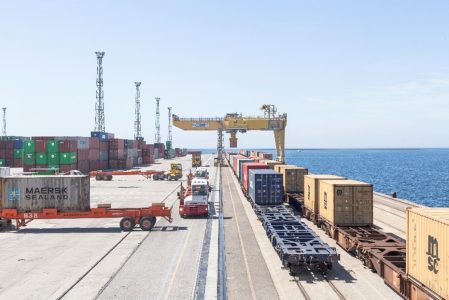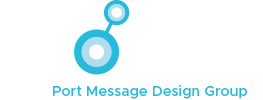
Port Community Systems (PCS) generally start at a port – but they often don’t end there. The Port of Trieste is an excellent example of just how far a PCS can spread its network in its mission to drive an efficient flow of information and cargo.
Two key factors make Trieste a ‘special case’ – and the same two factors are shaping its Port Community System (PCS).
First, in a restructuring of Italy’s ports system four years ago, the former Port Authority of Trieste took on a much wider remit, as the “Port System (or network) Authority of the Eastern Adriatic Sea”. Second, this may be a northern Italian port – but its main market is not northern Italy.
Project manager Alberto Cozzi explains: “When the Government reformed the ports system, the intention was to have some port authorities coordinating more than just one port. In our case, we now control two ports – Trieste and the smaller port of Monfalcone – and we also control two inland terminals, a shunting company and 52% of the local industrial development agency. This makes us different from the other port authorities of Italy. It is the reason why our PCS is the way it is now and the logic behind what we want to do in the future.
“When the PCS started, it was dedicated to the Port of Trieste – but more and more it has to be integrated with Monfalcone and the rail terminals.”
The other factor specific to Trieste is that the port’s market is not northern Italy, says Alberto. “Because of our location, our market is Germany, Austria, the Czech Republic and Slovakia. That is also why we are very much an intermodal port, being connected to rail terminals in many parts of Europe. Our intermodal share is very high. So through the PCS we want to build connections with the railway undertakings and rail terminals of Europe.”
A system of interoperability with Austria’s rail operator, introduced two years ago, is a good example. “When a train from Austria enters the port, we have all the information about it – the train’s composition, what is in each wagon, and so on. The same information is available when the train leaves the port.”
Trieste’s PCS connections have been enhanced through the Port Authority’s membership and leadership SMARTLOGI (sustainable cross-border logistics) project, which was co-financed by the cross-border Italy-Austria Programme; this project carried out feasibility studies and tests of links between the Port of Trieste and the Austrian Interport of Fürnitz.
A similar system has been developed through the COMODALCE (Enhancing Coordination on multimodal freight transport in Central Europe) project, co-financed by the Central Europe Interreg Programme. Through this project, the PCS was linked with rail terminal operations in Budapest, Hungary. “It is the first time we have had a system with a rail terminal so far away from us; if it works well, we have built a framework which we can replicate for other terminals,” says Alberto.
 While there has been this particular focus on rail connections, and the maritime side has been doing well, it is important not to ignore the road links and what can be done there.
While there has been this particular focus on rail connections, and the maritime side has been doing well, it is important not to ignore the road links and what can be done there.
For example, PCS functionalities have been added for the buffer areas provided for excess trucks and trailers, and other facilities including rail that are part of Trieste’s Freeport status. Trucks moving between these secure areas and the port can be monitored through the PCS via road cameras, to ensure there is no undue delay which might indicate that a container has been opened and/or goods tampered with somewhere along the ‘corridor’. An ad-hoc system was developed by the road operator Anas, linking the inland terminal of Trieste to the port.
The port will develop an app for truck drivers to book their slot at the port for delivering or collecting containers, to avoid congestion or queues outside the port gates. “This app will enable truck drivers to make a reservation of their entry into the port, and they will only be able to enter if they have this reservation. This will avoid congestion around the port, which will also reduce unnecessary fuel consumption and emissions which happens when trucks have to queue.”
The efforts do not stop at the port gates, Alberto emphasises. For example, the PCS is working with the motorway operator to develop a system that will provide truckers with advance warning on motorway signs if there is any kind of hold-up at the port. This will advise them if they need to stay where they are, rather than coming to the port when there is a problem.”
“Of course we want to see as few trucks as possible on the roads, so we have invested in rail to increase that modal share – but we are realistic. It will never be 100% by rail. So while we try to improve and increase the modal share by rail, we also need to make the entry and exit of trucks as efficient as possible and avoid bottlenecks.”
Whether it is the maritime, rail or road side, there is one common factor in all of this – getting the stakeholders on side. “Maybe the biggest hurdle is getting the stakeholders involved, telling them why the PCS and its functions are needed – for example, if there is congestion it is detrimental to all of us, including the port, terminal operators, trucks, and so on. The PCS can deliver a win-win situation but every time you change procedures you have to explain carefully what you are looking to achieve and work to change mindsets.”
 Being a public Port Authority is important, he says, “because we don’t have any commercial activity. The data is not ours – it is the terminal operators’, the rail operators’, the maritime agencies’ data. They trust us because we are public and don’t have any kind of interest. The terminal operators and others are keen to work with the PCS because they understand that digitalisation can make their lives easier so that they can focus on their regular activities and improve efficiency.”
Being a public Port Authority is important, he says, “because we don’t have any commercial activity. The data is not ours – it is the terminal operators’, the rail operators’, the maritime agencies’ data. They trust us because we are public and don’t have any kind of interest. The terminal operators and others are keen to work with the PCS because they understand that digitalisation can make their lives easier so that they can focus on their regular activities and improve efficiency.”
At the end of the day, Trieste is a global port and all those involved must remember they are part of global supply chains, says Alberto. “How can you improve the attractiveness of the port? Work to become more integrated in global supply chains!”
Looking ahead ten years? “We are well positioned now. In ten years time, I would expect to see full integration in the global supply chains that cross the Port of Trieste.”
Last word …
A Green Digital Twin of the Port of Trieste could be created, which would help to monitor pollution and improve air quality in and around the port, says Alberto.
“We could install IoT sensors to check CO2 and other pollutants, and noise; a Green Digital Twin of the port would tell us, based on the sensors and real-time meteorological data, where the pollution would go in certain conditions.”
This could also be replicated in other parts of the Port Authority’s systems – it is, as Alberto says, a long-term strategy.
To find out more about the Port of Trieste

Alberto Cozzi, Project Manager
Port Network Authority of the Eastern Adriatic Sea



